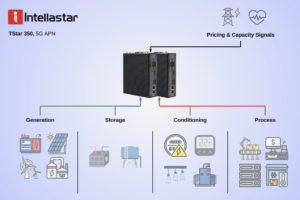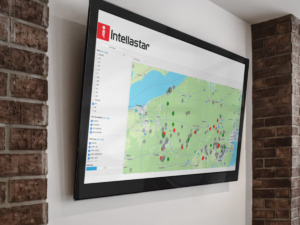The term “Grid-Interactive Efficient Buildings” (GEBs) was introduced by the U.S. Department of Energy (DOE) to describe energy-efficient buildings equipped with smart technologies and on-site distributed energy resources (DERs) that provide demand flexibility while optimizing energy costs, offering grid services, and meeting occupant needs in an integrated manner.
📈 The Trend:
GEBs are transform energy management by merging building efficiency with grid optimization. By using technologies like Intellastar’s Energy Analyst with advanced sensors, and distributed energy resources (DERs), GEBs can respond to grid demands, manage peak loads, and integrate renewable energy seamlessly. This trend addresses energy costs, grid stability, and decarbonization goals simultaneously.
Both the U.S. Department of Energy (DOE) and the International Energy Agency (IEA) highlight the transformative potential of Grid-Interactive Efficient Buildings (GEBs). A DOE report underscores how smart technologies enable buildings to act as dynamic energy assets, optimizing energy use and load balancing in real time. An IEA report focuses on GEBs’ ability to enhance grid reliability and lower emissions by integrating efficiency measures with responsive systems. It provides real-world examples of how dynamic energy management reduces grid strain during peak demand periods.
🚀 The Accelerators:
Grid Diversity with Renewables and Storage: Integrating a diverse mix of energy sources, including renewables and storage, enhances the grid’s capacity to support GEB operations. For instance, pairing buildings with local solar arrays and batteries enables them to function autonomously during outages or peak demand, reducing strain on centralized grids. Programs like California’s Self-Generation Incentive Program (SGIP) illustrate how support for distributed energy resources (DERs) promotes grid diversity. Dynamic Pricing Models and Reliability: Expanding real-time pricing models incentivizes GEBs to adjust energy consumption based on grid demand and costs. Energy tariffs with time-of-use pricing encourages load shifting to off-peak hours, while demand charges spur investments in energy storage and demand response strategies. Grid operators in Texas and PJM have already implemented mechanisms that reward flexible energy use to stabilize the grid during extreme weather events. Progressive Regulatory Frameworks: Regulations mandating grid interactivity and energy efficiency can drive GEB deployment at scale. Policies like New York’s Climate Leadership and Community Protection Act (CLCPA) require buildings to lower emissions and integrate DERs, fostering innovation in GEB technologies. Similarly, FERC Order 2222 allows DERs to compete in wholesale energy markets, creating financial opportunities for GEB-enabled buildings.





